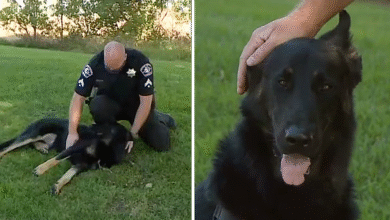Viral Airline Video: What Really Happened on That Flight?

The aviation world — and the internet — has been buzzing over an unusual incident aboard a domestic Mexican flight that turned an otherwise ordinary journey into one of the most discussed topics on social media in recent weeks.
What started as a typical flight from Mexico City to Cancún quickly evolved into a moment that passengers will never forget. A crew member’s unexpected and spirited performance during the safety demonstration left some travelers laughing, others shocked, and millions more watching online after footage began circulating across various platforms.
This isn’t the first time a flight crew member has brought extra personality to their role, but this incident stood out because of its timing, style, and the intense reaction it sparked online. As debates about professionalism, entertainment, and the boundaries of customer service continue, many people are asking: what actually happened, and why has it struck such a nerve?
The Flight That Caught the World’s Attention
On a sunny weekday morning, passengers boarded the flight expecting the usual — an efficient boarding process, a quick taxi to the runway, and the standard pre-flight announcements. The route was a popular one, with vacationers, business travelers, and families heading toward the white-sand beaches and turquoise waters of Cancún.
Everything appeared normal until the moment the cabin crew began the safety demonstration — the short but essential presentation that shows passengers how to fasten seat belts, where the exits are located, and how to use oxygen masks in an emergency. Normally, this part of the flight is quiet and procedural. This time, however, it was anything but ordinary.
A Safety Demonstration Like No Other
Instead of delivering the instructions in the calm, reserved manner that most passengers are accustomed to, one flight attendant infused the presentation with a level of enthusiasm and theatrical flair rarely seen in commercial aviation.
Eyewitnesses recall that her movements were animated, her facial expressions lively, and her tone playful. She smiled widely, gestured with dramatic emphasis, and occasionally interacted with passengers in the first few rows, drawing both chuckles and raised eyebrows.
One traveler, seated near the front, described the scene:
“It was like she was hosting a TV show — confident, funny, and really engaging. People were watching closely instead of looking at their phones. You could tell she was enjoying herself.”
Another passenger noted that while it was certainly different from the norm, it didn’t interfere with the safety message itself. In fact, some said it made them pay closer attention to the information they usually tune out.
The Video That Went Viral
In today’s world, it takes only seconds for a moment like this to be captured and shared. Multiple passengers took out their phones and recorded portions of the safety demonstration. Within hours, clips were being uploaded to TikTok, Instagram, Twitter (now X), and Facebook.
One particular video — about 45 seconds long — gained the most traction. In it, the flight attendant confidently demonstrates how to secure the seat belt, points out the exits with an almost dance-like rhythm, and nods encouragingly to passengers who are watching.
By the next day, the clip had amassed millions of views, sparking debates in comment sections and even catching the attention of online news outlets. As of this writing, that single video has been watched more than 10 million times, with countless reposts and remixes.
Divided Reactions Online
The internet responded as it always does — with a mix of praise, criticism, humor, and memes.
Supporters argued that the flight attendant brought a refreshing dose of humanity to an otherwise monotonous procedure. They pointed out that airline passengers often ignore safety briefings altogether, and this unconventional delivery made people pay attention. Many said the performance made them smile and improved their travel experience.
On the other hand, critics questioned whether the performance crossed a line into unprofessional behavior. Some felt that a safety demonstration should remain serious and distraction-free, emphasizing that emergencies require passengers to remember the information clearly.
A smaller group of commenters worried about the possibility of cultural misunderstandings, pointing out that what feels entertaining to some might feel inappropriate to others, depending on their background and expectations.
Airline’s Response
When reached for comment, the airline confirmed that the safety procedures were delivered in full and in accordance with aviation regulations. However, they also acknowledged that the presentation style was “more energetic than standard practice” and said they would be reviewing internal guidelines to ensure consistency in future flights.
The statement emphasized that passenger safety is always the top priority and that the airline values both professionalism and positive customer experiences. They did not indicate whether the crew member would face any disciplinary action.
Why This Story Resonates Worldwide
Part of what makes this incident so fascinating is that it taps into a universal experience. Almost everyone who has flown before is familiar with the safety demonstration, and many admit to mentally checking out during it. Seeing it delivered in a way that captures attention feels novel — and in our digital age, novelty spreads fast.
It also raises broader questions about the role of service workers in creating memorable experiences. Should they stick strictly to the script, or is there room for personal flair? Can humor and creativity coexist with serious safety messaging?
These aren’t new debates, but this flight provided a real-world example that reignited the conversation.
The History of Creative Safety Demonstrations
While rare, this isn’t the first time a flight crew has made headlines for delivering a standout safety presentation. Airlines like Southwest in the United States have long been known for allowing attendants to inject humor into their announcements, often getting passengers to laugh while still conveying critical instructions.
Similarly, Air New Zealand has produced elaborate in-flight safety videos featuring movie themes, famous athletes, and even The Lord of the Rings characters — all in the name of passenger engagement. These efforts have been praised for making travelers pay attention, but they also walk a fine line between entertainment and maintaining the gravitas of safety protocols.
Psychology Behind the Engagement
Experts in communication and psychology say there’s a reason why creative approaches like this tend to stick in people’s minds. When an audience is emotionally engaged — whether through humor, surprise, or novelty — they are more likely to retain information.
Dr. Laura Sánchez, a behavioral psychologist, explains:
“Our brains are wired to remember events that stand out from the routine. A unique safety demonstration is more likely to be recalled in the unlikely event of an emergency, which could actually enhance safety rather than diminish it.”
However, she also cautions that any creative twist must not obscure the clarity of the instructions or make passengers unsure about the correct procedures.
Social Media’s Amplifying Effect
Before smartphones, moments like this might have been shared as a fun travel story with friends and family. Today, a 30-second clip can reach millions of people in hours. The combination of visual entertainment, an easily understood scenario, and the universal nature of air travel made this the perfect recipe for viral success.
Social media also allows the story to evolve in ways the original participants never imagined. People create reaction videos, parody edits, and commentary posts, each adding another layer to the discussion. Some viewers focus on the humor, others on professionalism, and still others use it as a jumping-off point to talk about workplace creativity in general.
What This Means for Airlines Moving Forward
Incidents like this pose both opportunities and challenges for airlines. On one hand, they can boost brand visibility and create moments of positive connection between staff and passengers. On the other hand, they may trigger criticism or highlight inconsistencies in service delivery.
Many industry experts believe that airlines will increasingly train staff not just in technical procedures, but also in customer engagement strategies that align with brand identity. That could mean some carriers encourage personality and humor, while others stick to a more formal tone.
The Passenger Perspective
For the travelers on that Mexico City–to–Cancún flight, the experience became a memorable part of their journey. Some described it as the highlight of their trip before even landing in paradise. Others admitted they initially felt caught off guard, but ultimately appreciated the energy and positivity.
One passenger summed it up in a post-flight interview:
“Travel can be stressful — long lines, delays, cramped seats. Having a flight attendant who made us smile without compromising the message was a nice change.”
Final Thoughts
Whether you see it as a harmless bit of fun or a breach of professional norms, this viral airline video has undeniably sparked important conversations. It’s a reminder that in a world where millions of people travel every day, even small moments can make a lasting impact when they are delivered with authenticity and a touch of creativity.
As the dust settles and the airline reviews its policies, one thing is clear: passengers will be talking about this flight for a long time — and every time they hear “ladies and gentlemen, please direct your attention to the cabin crew,” they might just wonder if they’re about to witness the next viral sensation.





